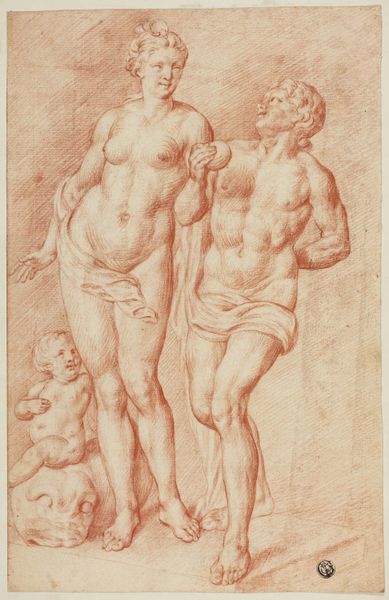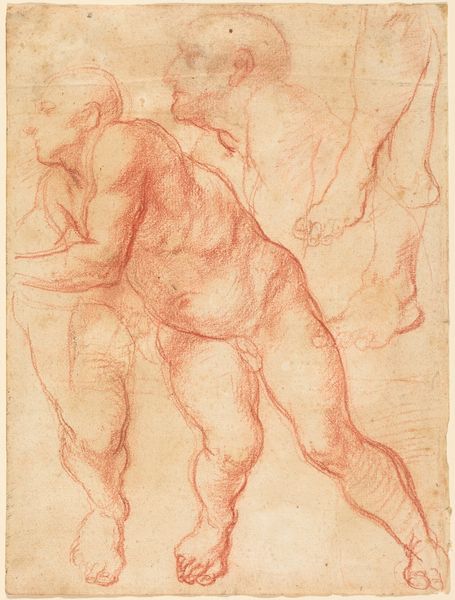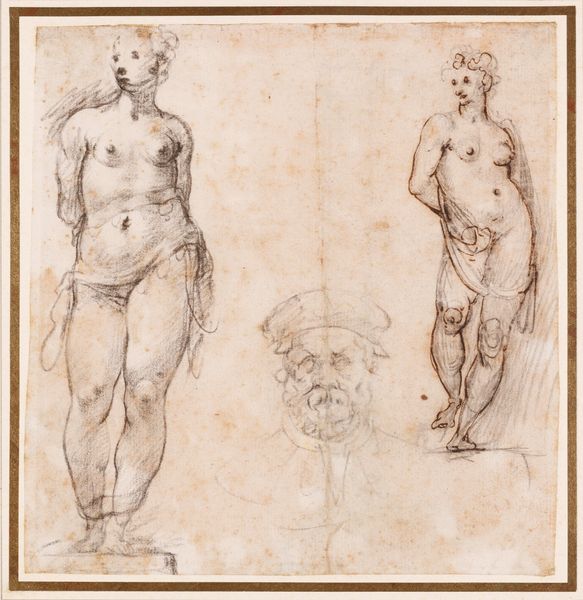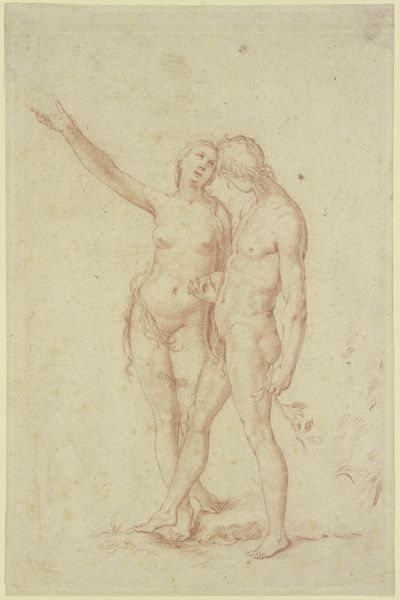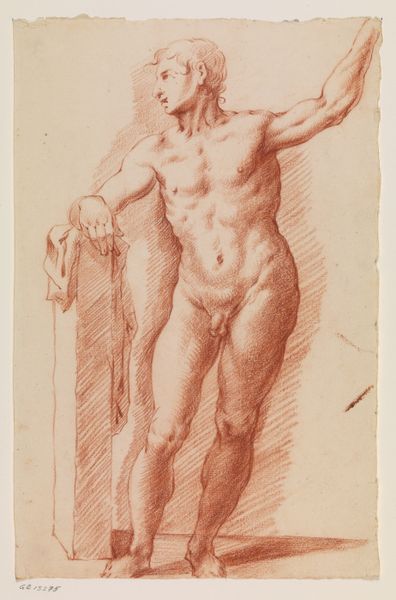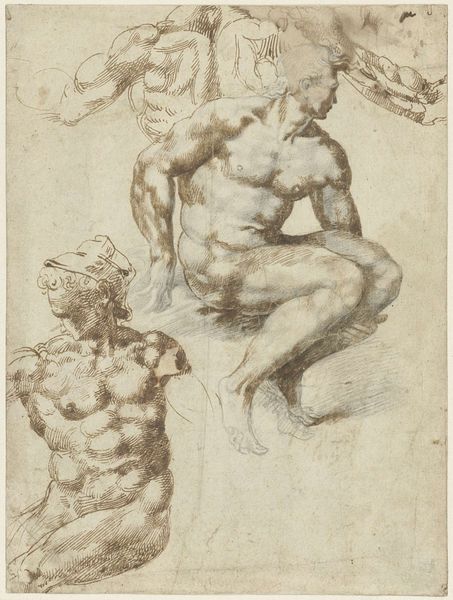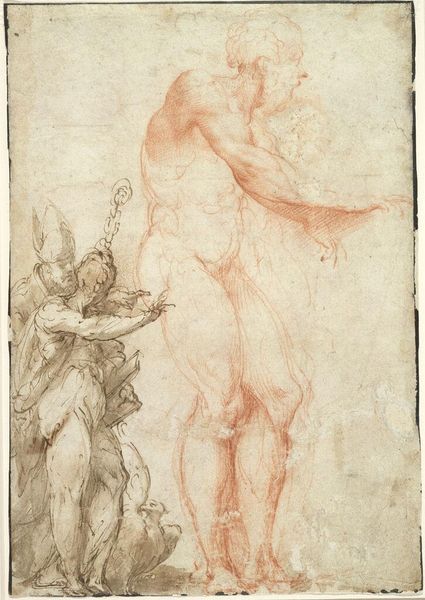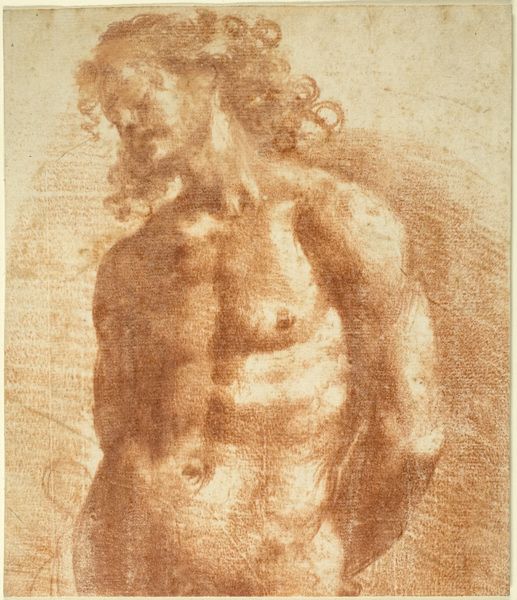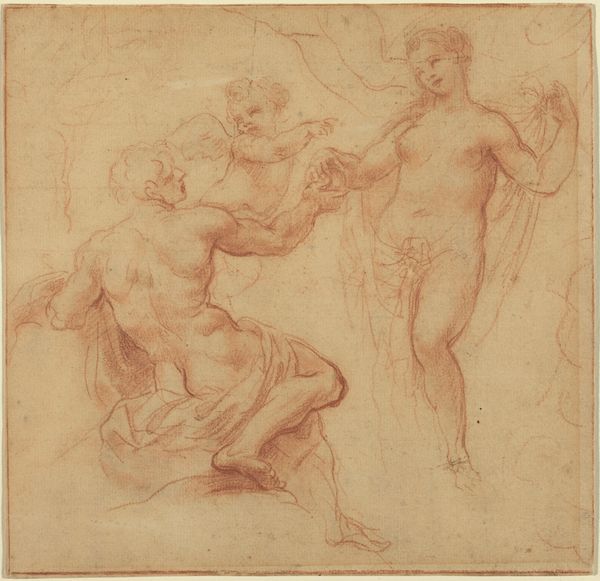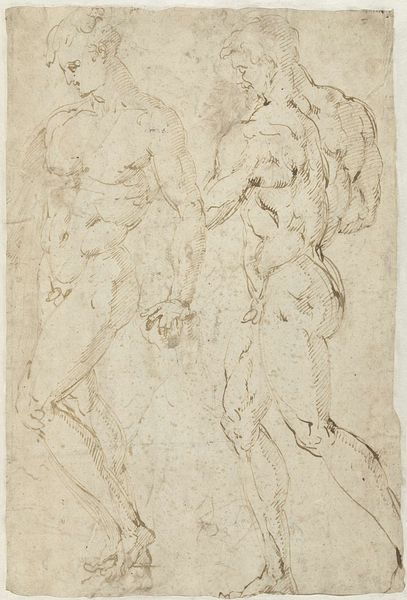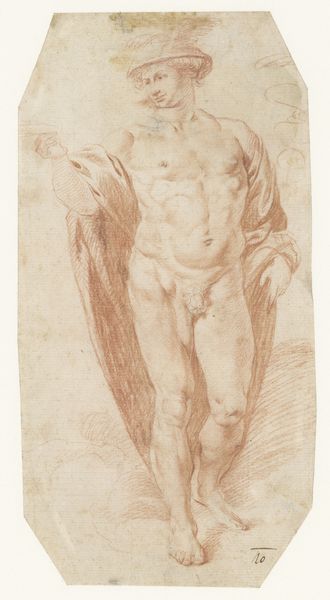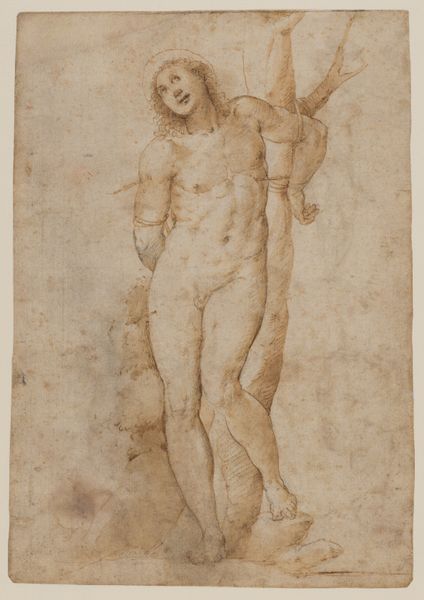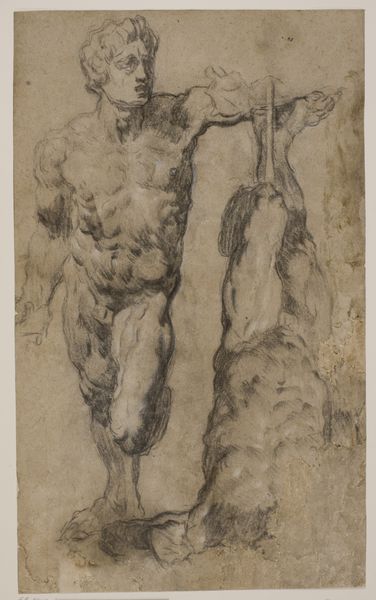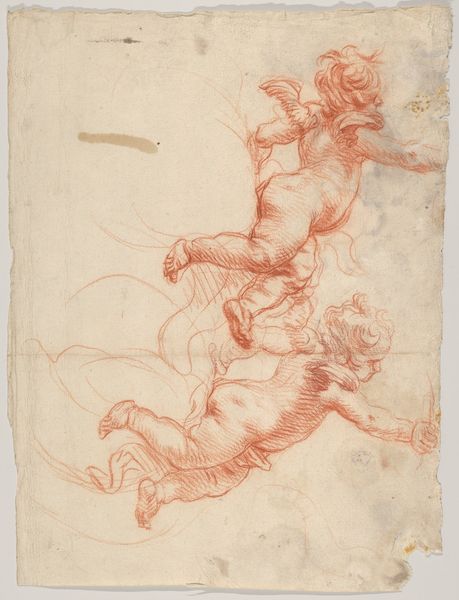
drawing, print, paper, chalk
#
drawing
# print
#
charcoal drawing
#
figuration
#
paper
#
11_renaissance
#
pencil drawing
#
chalk
#
academic-art
Dimensions: 270 × 188 mm
Copyright: Public Domain
Jean Goujon made this red chalk drawing, Atlantis, sometime in the 16th century. It shows two figures with human torsos and goat-like legs, known as atlantids, drawn in exquisite detail. These figures take us to France during the Renaissance, a period of renewed interest in classical antiquity. Here, Goujon draws on the ancient Greek architectural tradition of using sculpted male figures as supporting columns. During this period, the French monarchy sought to legitimize its power through direct references to classical empires. Royal patronage of the arts led to monumental works of architecture and sculpture explicitly modeled on ancient forms. Drawings like this were instrumental in this building process; Goujon was likely exploring ideas for architectural ornament. The drawing is not just an aesthetic object, but evidence of how art served the ambitions of state power. To fully understand Atlantis, we can look to archival records of royal commissions, architectural treatises, and studies of classical art. These diverse resources reveal how art and architecture shaped the social and political landscape of Renaissance France.
Comments
No comments
Be the first to comment and join the conversation on the ultimate creative platform.
